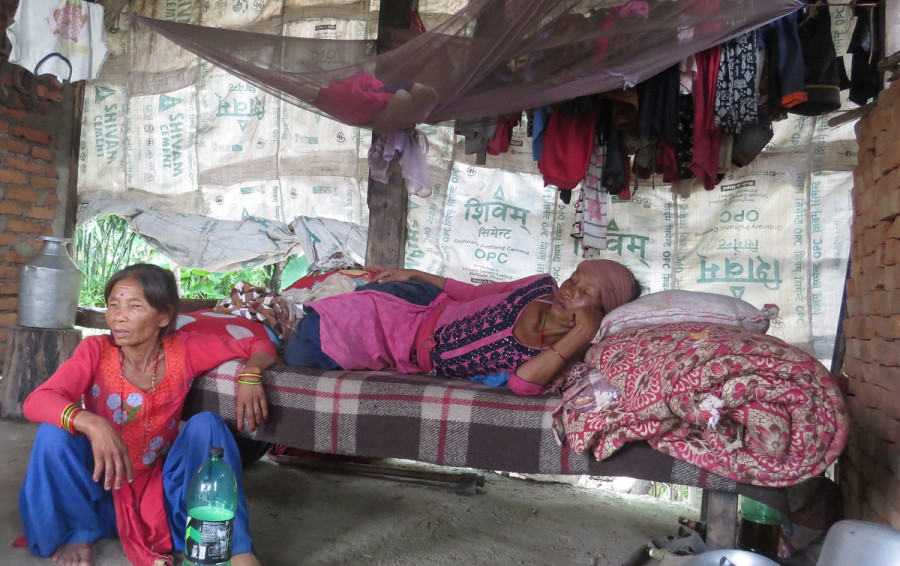Editorial
Custodians of injustice
Nepal has a lot to do in terms of fully democratising its institutions.
Not long ago, at the height of the Maoist insurgency, thousands of people were taken into police custody and military barracks as suspected Maoists. The Bhairavnath Battalion, right in the heart of the Kathmandu Valley, had earned notoriety as a black hole of injustice—many who were taken through the gates of the barracks as suspects never returned. Some of them returned as corpses, others as half-dead souls crippled for life, physically and psychologically. Years later, the Maoists joined mainstream politics and formed or toppled governments, joining their necks with some among the old guard they had considered class enemies during the insurgency.
What they have forgotten in the course of the past decade and a half of mainstream politics is the fact that many of their comrades and members of the general public who were taken into the dark chambers of police custody and military barracks are yet to return—and are probably long dead within their walls. This rings true for the other major parties in Nepali politics today whose cadre disappeared without a trace in custody even as they fought against the party-less Panchayat system and even the Rana regime. Even in republican Nepal, impunity remains the bête noire of justice and democracy.
The impunity with which security agencies kill or maim the individuals they take into their custody as suspects has seen a repetition in the recent death of Bijay Mahara, a 19-year-old from Garuda Municipality in Rautahat, who came out of police custody as a corpse on August 26 after alleged torture. Bijay was one of the seven youths who were arrested on August 19 as suspects in the murder of Niranjan Ram, a fellow local teenager. While police claim Mahara died of medical complications in the course of treatment for a kidney ailment, his family claims he was tortured in custody. The family supports its claim with a video in which Mahara spoke, just prior to his death at Narayani Sub-Regional Hospital in Birgunj, about being tortured by plainclothes police and forced to confess to killing Niranjan Ram.
The Ministry of Home Affairs on Tuesday suspended police inspector Nabin Kumar Singh and head constable duo Feroz Miya Dhuniya and Mannu Kumar Singh for their alleged involvement in Mahara's death. But Mahara is only the latest victim of an alleged custodial death. On June 10, Shambhu Sada, a 23-year-old truck driver who had turned himself in to the police after he killed a woman in a traffic incident, died in police custody in Dhanusha. On June 20 last year, police allegedly killed Kumar Paudel, a member of a Maoist splinter group, in custody. On July 22, park rangers and soldiers guarding Chitwan National Park allegedly killed Raj Kumar Chepang, a 24-year-old man who had gone to the jungle to collect snails. Examples abound of incidents of alleged torture and eventual killing of inmates with complete impunity as perpetrators get away without any action while the government shuts the mouths of victims' families with compensation.
The unending saga of custodial deaths does not bode well for a democracy like ours. We must consider that all eyes are watching us. Human Rights Watch in its recent statement rightly condemned Nepali authorities for failing to conduct credible investigations into allegations of extrajudicial executions and custodial deaths resulting from torture. "Nepal is still trying to grapple with delivering justice for unlawful killings during the armed conflict, but instead of keeping its promise of reforms and pledges against repeat offences, the abuses continue to mount," the report said. National Human Rights Commission has said in its recent report that custodial torture remains a problem despite its criminalisation in the 2018 Criminal Code. A research paper published by the Advocacy Forum has pointed out that a large number of victims of custodial deaths belong to people from marginalised communities. Having sailed through the insurgency, authoritarianism and a fragile peace process in the past couple of decades, Nepal has a lot to do in terms of fully democratising its institutions. As the transitional justice process lingers on even after a decade and a half since the peace process began, the least the country can do is to begin working towards ending impunity in its security apparatuses.




 5.55°C Kathmandu
5.55°C Kathmandu














